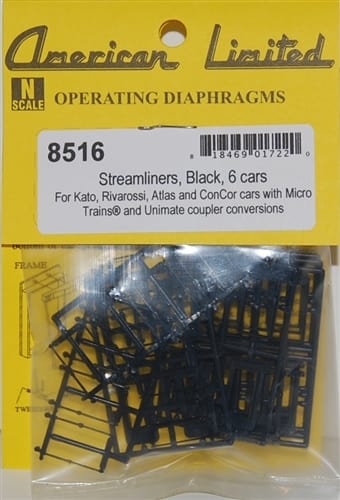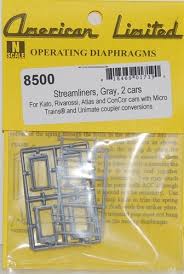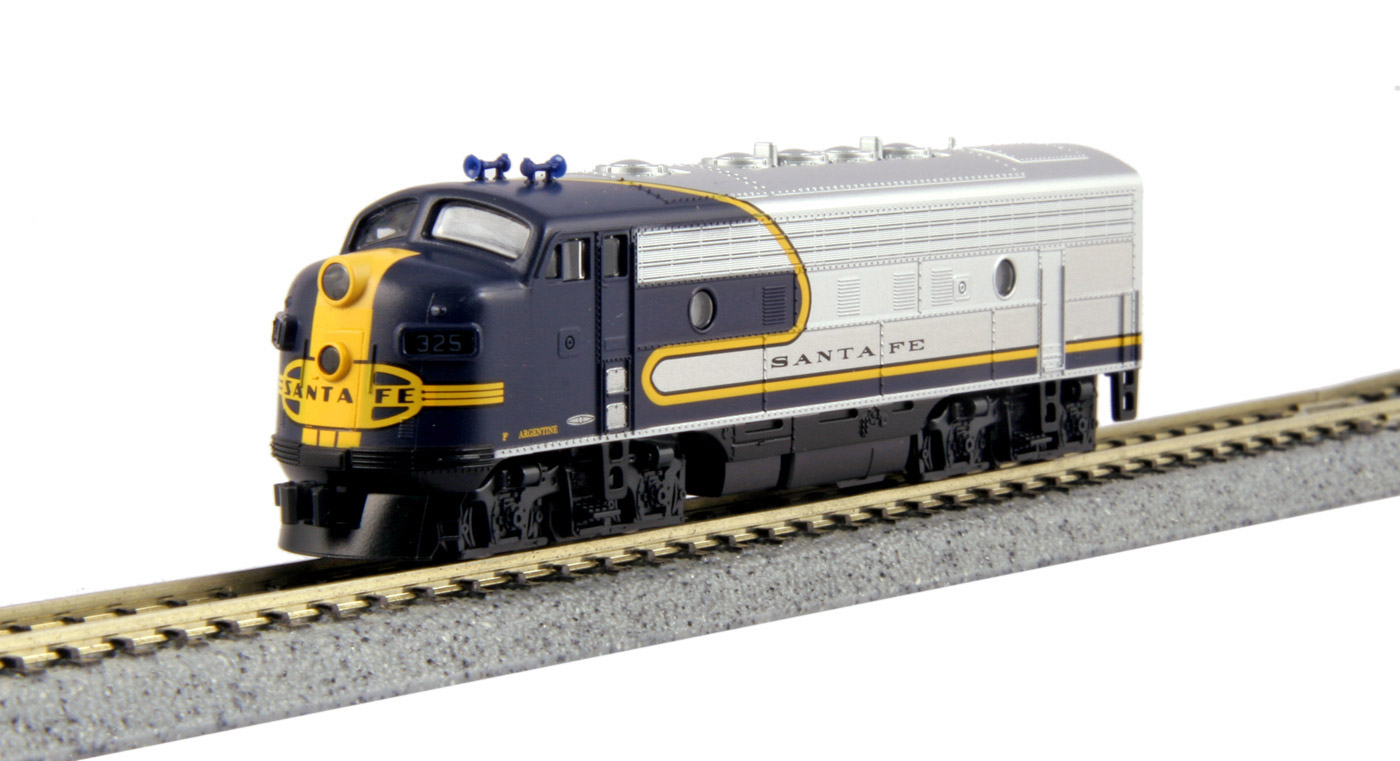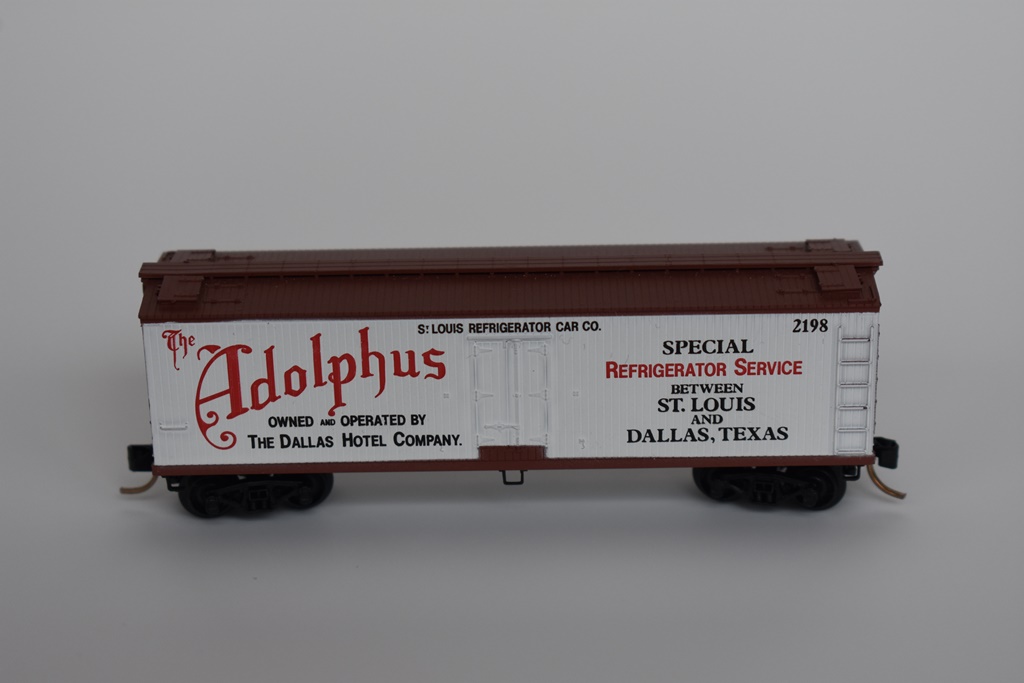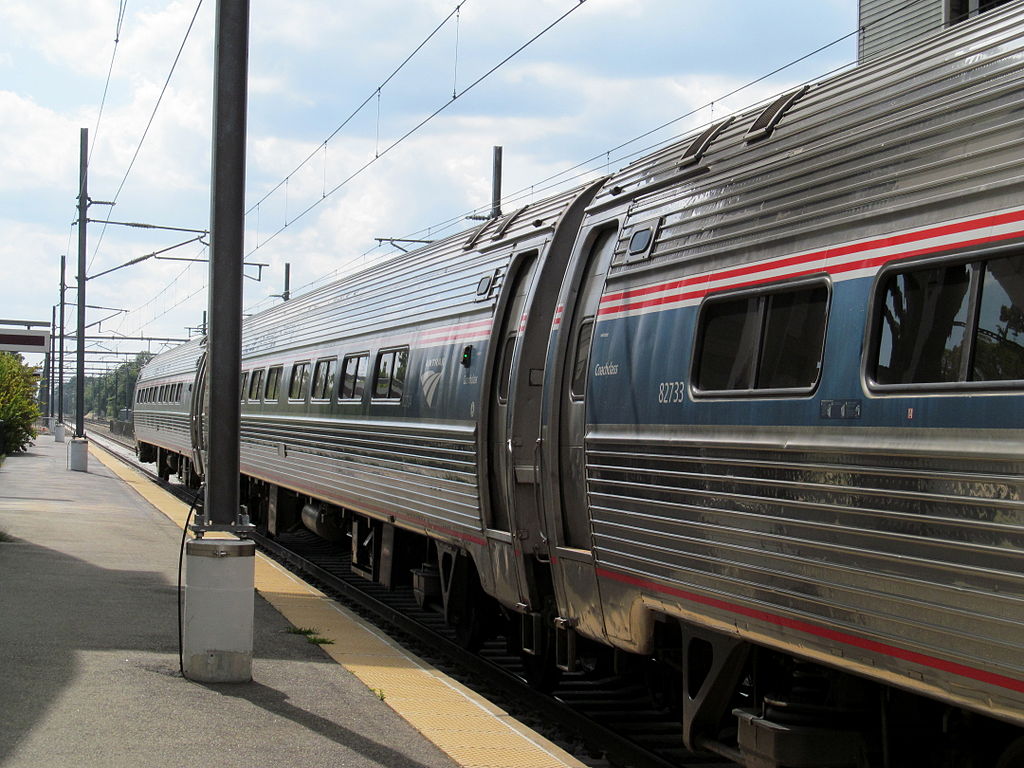Specific Item Information: N Diaphragms for Streamliners, 6 car set (black).
For Kato, Rivarossi, Atlas and ConCor cars with MicroTrains® and Unimate® coupler conversions.
Kits have instructions to help install the diaphragms on any appropriate car.
For Kato, Rivarossi, Atlas and ConCor cars with MicroTrains® and Unimate® coupler conversions.
Kits have instructions to help install the diaphragms on any appropriate car.
Model Information: Kato boxed sets for North American Prototypes come in various shapes and sizes. These may contain complete train sets with locomotive, track and power pack or may be as simple as a pair of passenger coaches. Many of the sets use "bookshelf" boxes with cardboard sleeves and carefully cut foam inserts.
Prototype History: Amfleet is a fleet of single-level intercity railroad passenger cars built by the Budd Company for American company Amtrak in the late 1970s and early 1980s. Budd based the Amfleet design on its earlier Metroliner electric multiple unit. An initial order for 57 cars in 1973 to supplement the Metroliners on the Northeast Corridor grew to two orders totaling 642 cars, sufficient to reequip all the services on the Northeast Corridor and many other routes around the United States. The first 492 cars, known as Amfleet I and completed between 1975–1977, were designed for short-distance service. A second order of 150 cars, known as Amfleet II and completed between 1980–1983, were designed for long-distance service. They were the last intercity passenger cars built by Budd.
Car types include both long- and short-distance coaches, cafes, club cars, and lounges. Since the construction of the cars multiple rebuildings have eliminated the club cars and lounges in favor of business class cars, club-dinettes, and "diner-lite" dining cars. Amtrak experimented with sleeping car conversions in the 1970s but did not pursue the idea. The Amfleet I has vestibules on both ends of the car for faster unloading, while the Amfleet II has a single vestibule. The Amfleet II also has slightly larger windows.
The Amfleets were the first new locomotive-hauled intercity cars ordered by Amtrak and the first such cars built in the United States since 1965. Their introduction in the mid-1970s led to improved reliability for Amtrak's trains and ridership gains. As of 2015, Amfleet cars are used extensively in the eastern and mid-western United States, forming the backbone of Amtrak's single-level fleet.
From Wikipedia
Car types include both long- and short-distance coaches, cafes, club cars, and lounges. Since the construction of the cars multiple rebuildings have eliminated the club cars and lounges in favor of business class cars, club-dinettes, and "diner-lite" dining cars. Amtrak experimented with sleeping car conversions in the 1970s but did not pursue the idea. The Amfleet I has vestibules on both ends of the car for faster unloading, while the Amfleet II has a single vestibule. The Amfleet II also has slightly larger windows.
The Amfleets were the first new locomotive-hauled intercity cars ordered by Amtrak and the first such cars built in the United States since 1965. Their introduction in the mid-1970s led to improved reliability for Amtrak's trains and ridership gains. As of 2015, Amfleet cars are used extensively in the eastern and mid-western United States, forming the backbone of Amtrak's single-level fleet.
From Wikipedia
Road Name History: 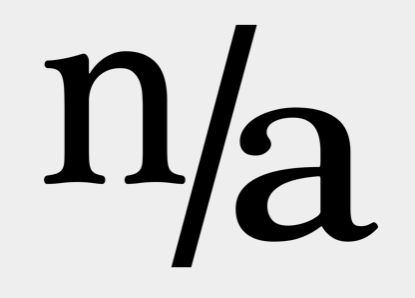 No applicable company.
No applicable company.

Item created by: Powderman on 2018-02-25 13:55:35. Last edited by Alain LM on 2020-11-01 06:40:04
If you see errors or missing data in this entry, please feel free to log in and edit it. Anyone with a Gmail account can log in instantly.
If you see errors or missing data in this entry, please feel free to log in and edit it. Anyone with a Gmail account can log in instantly.


